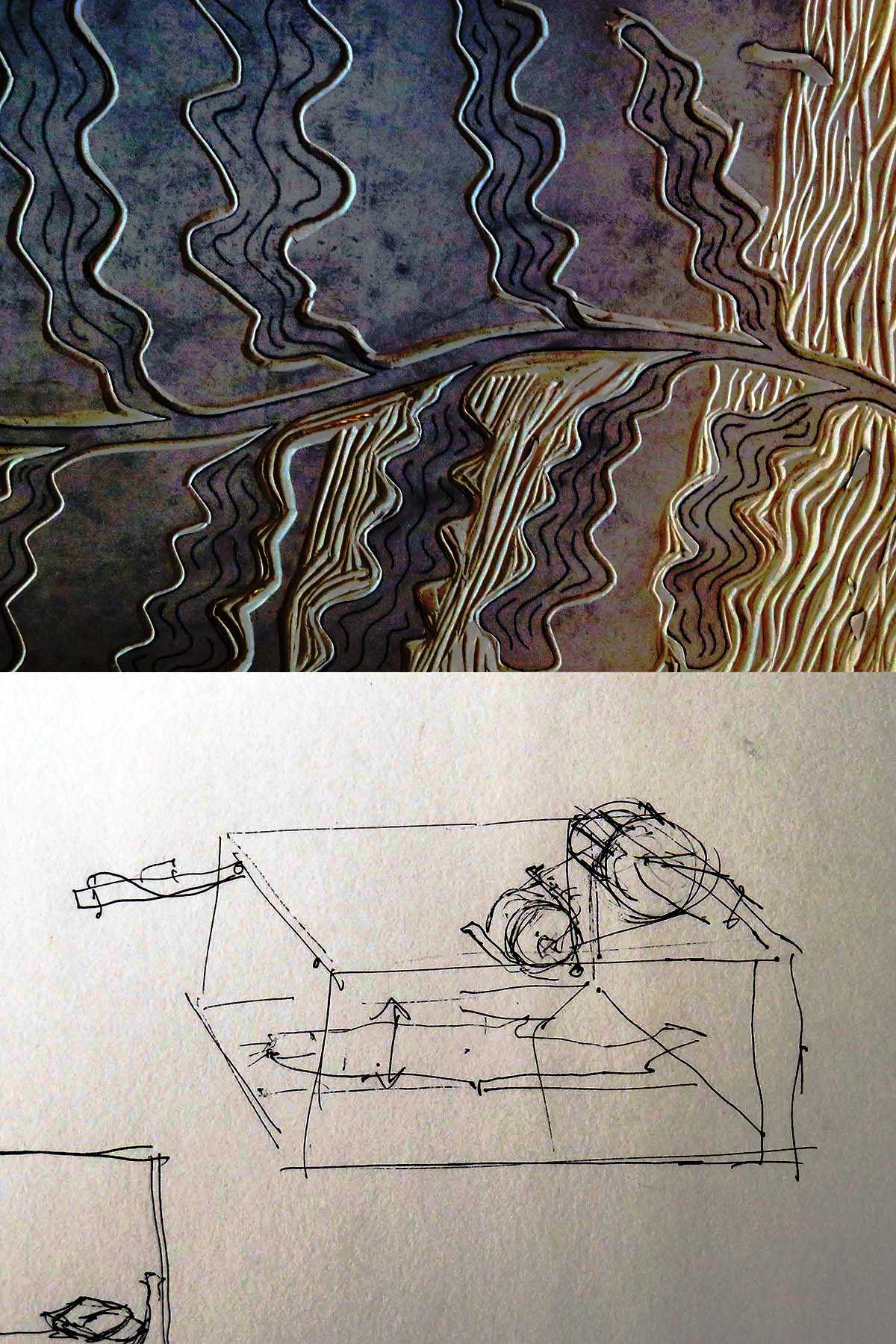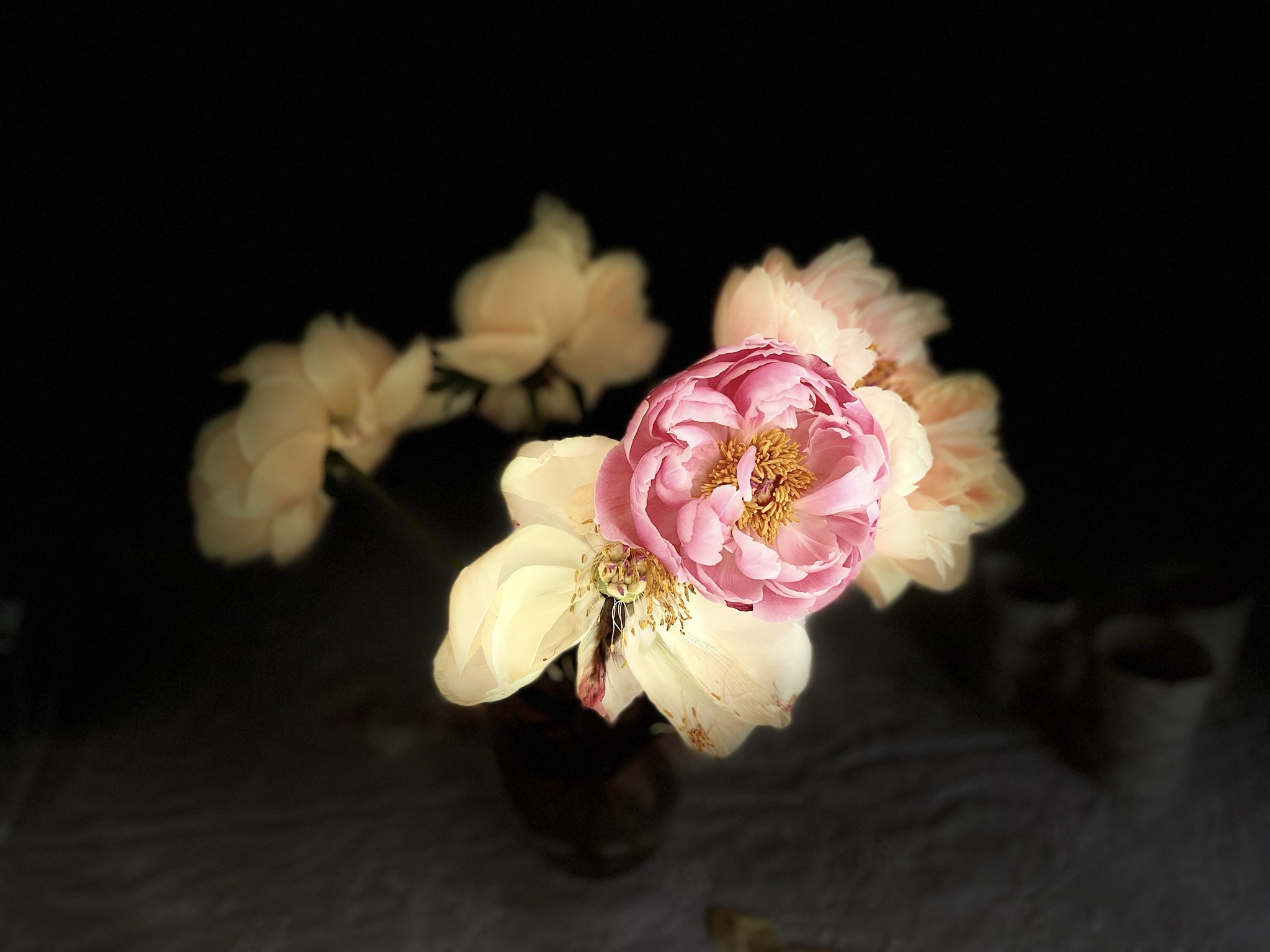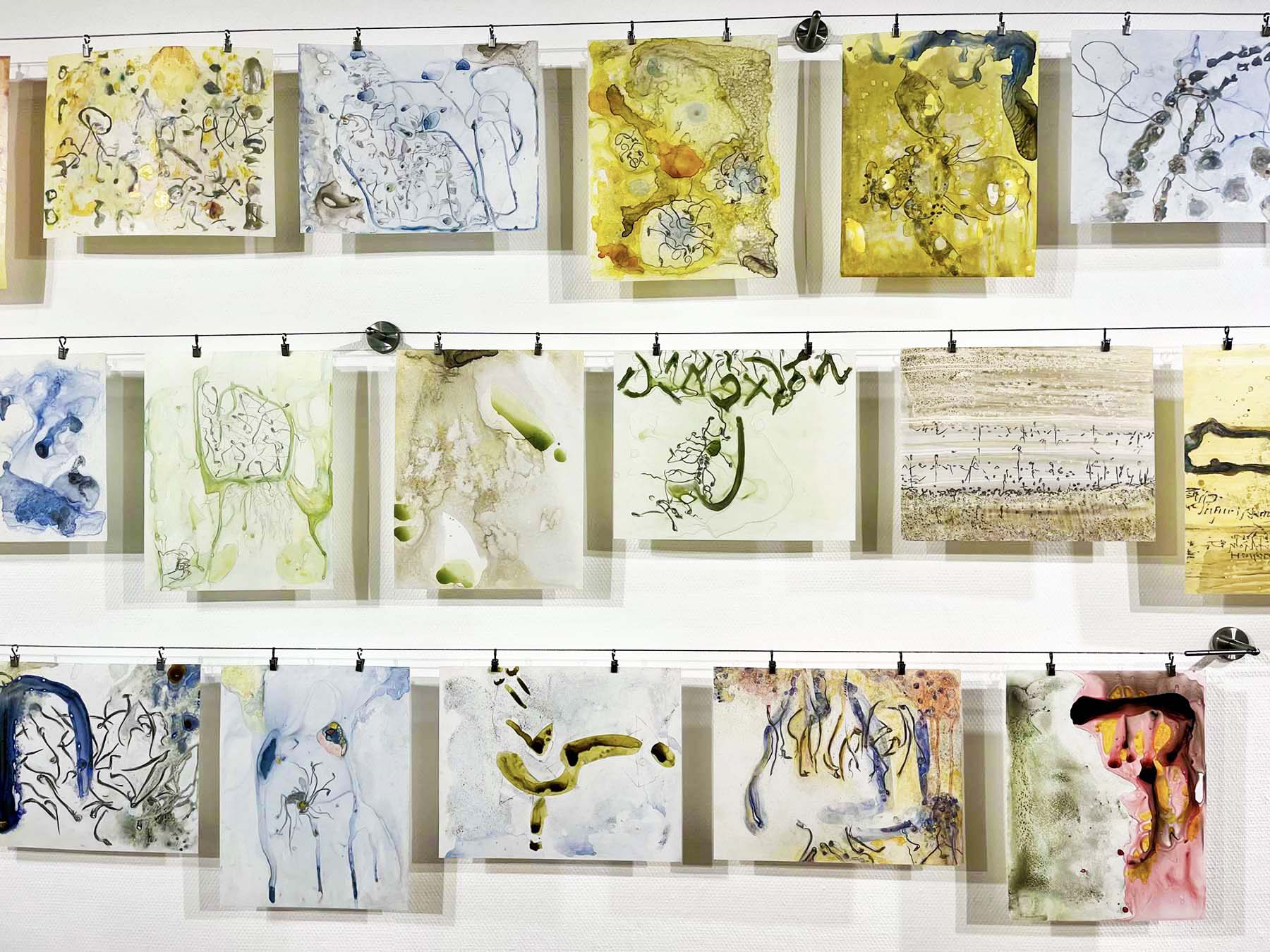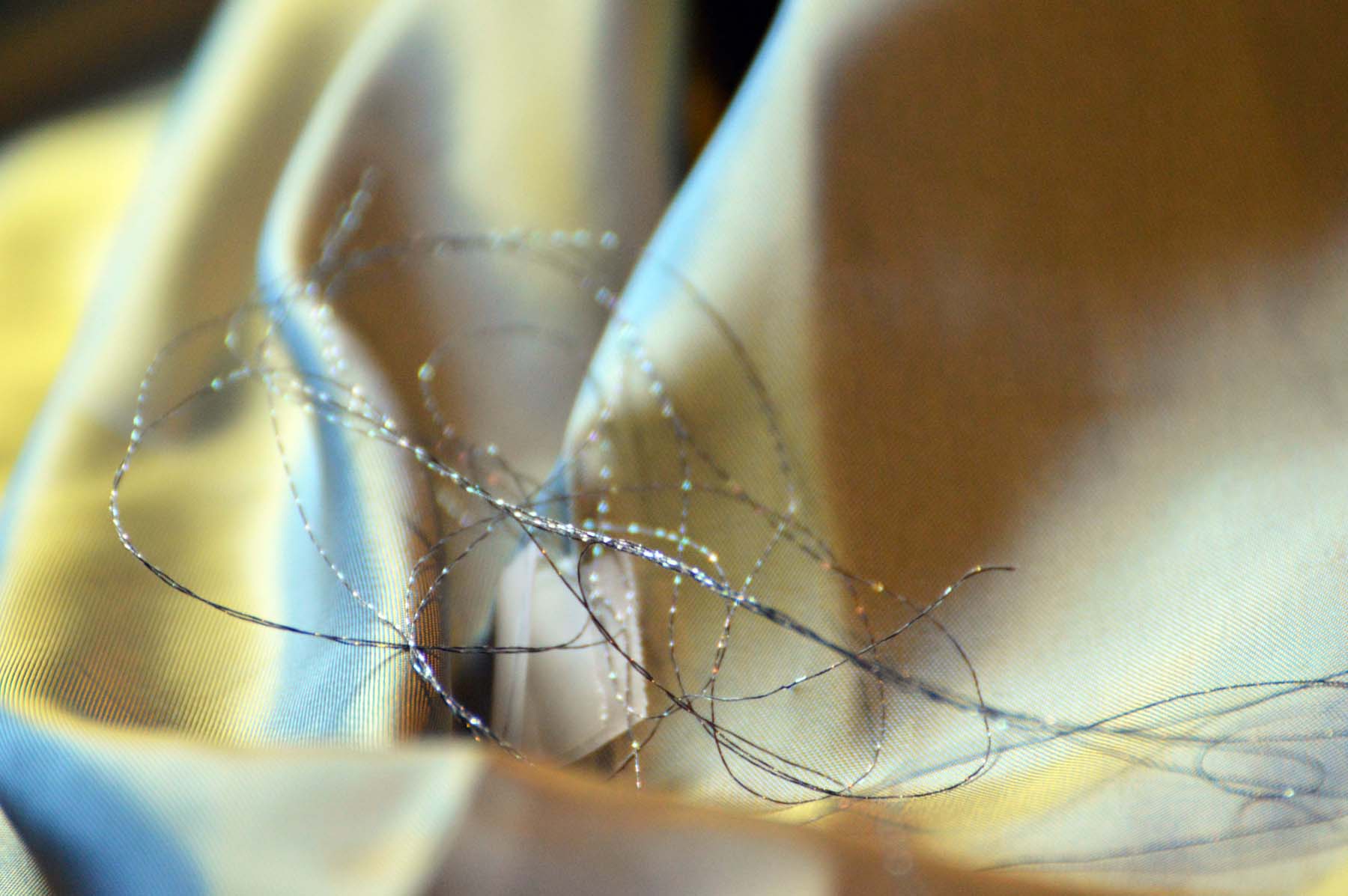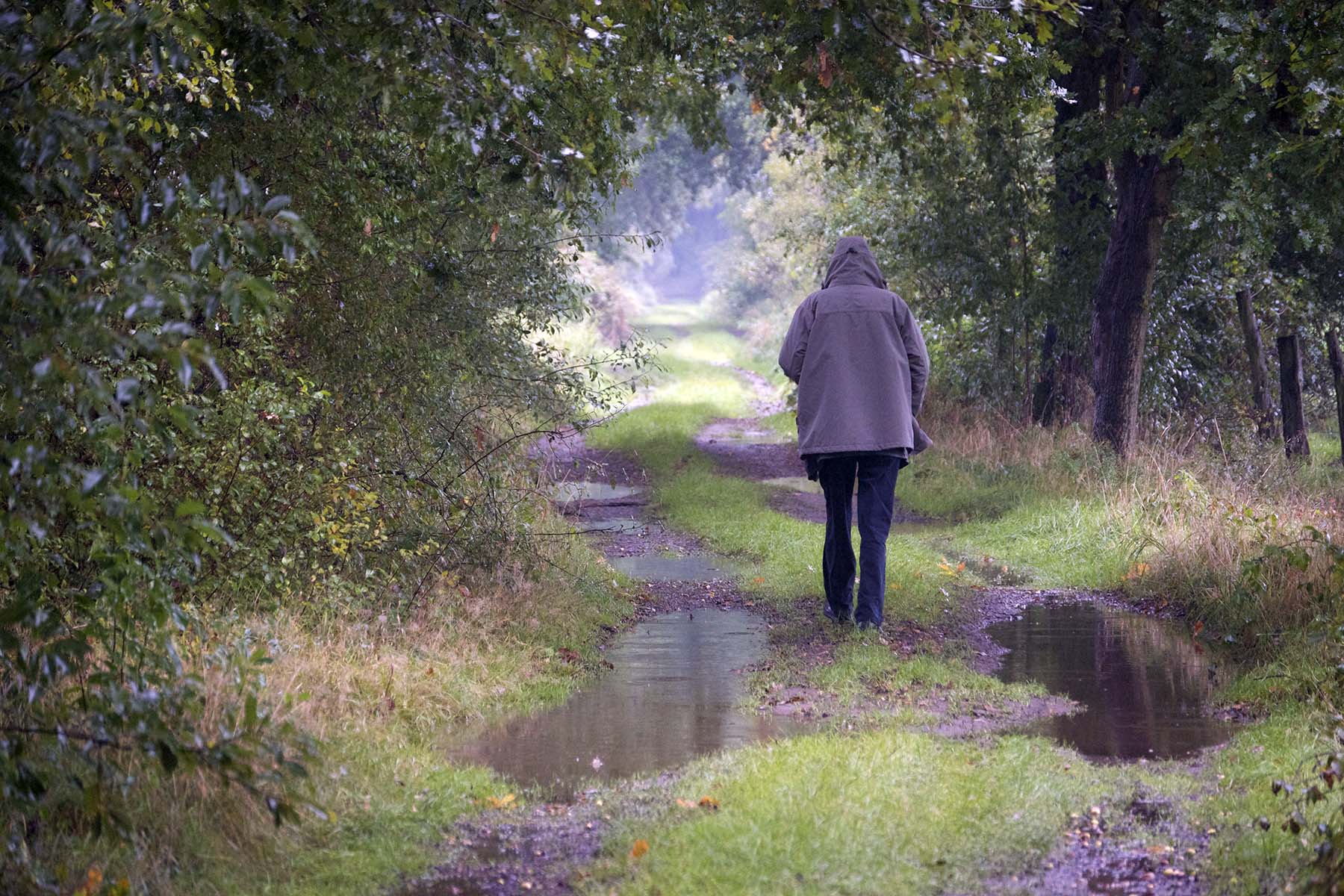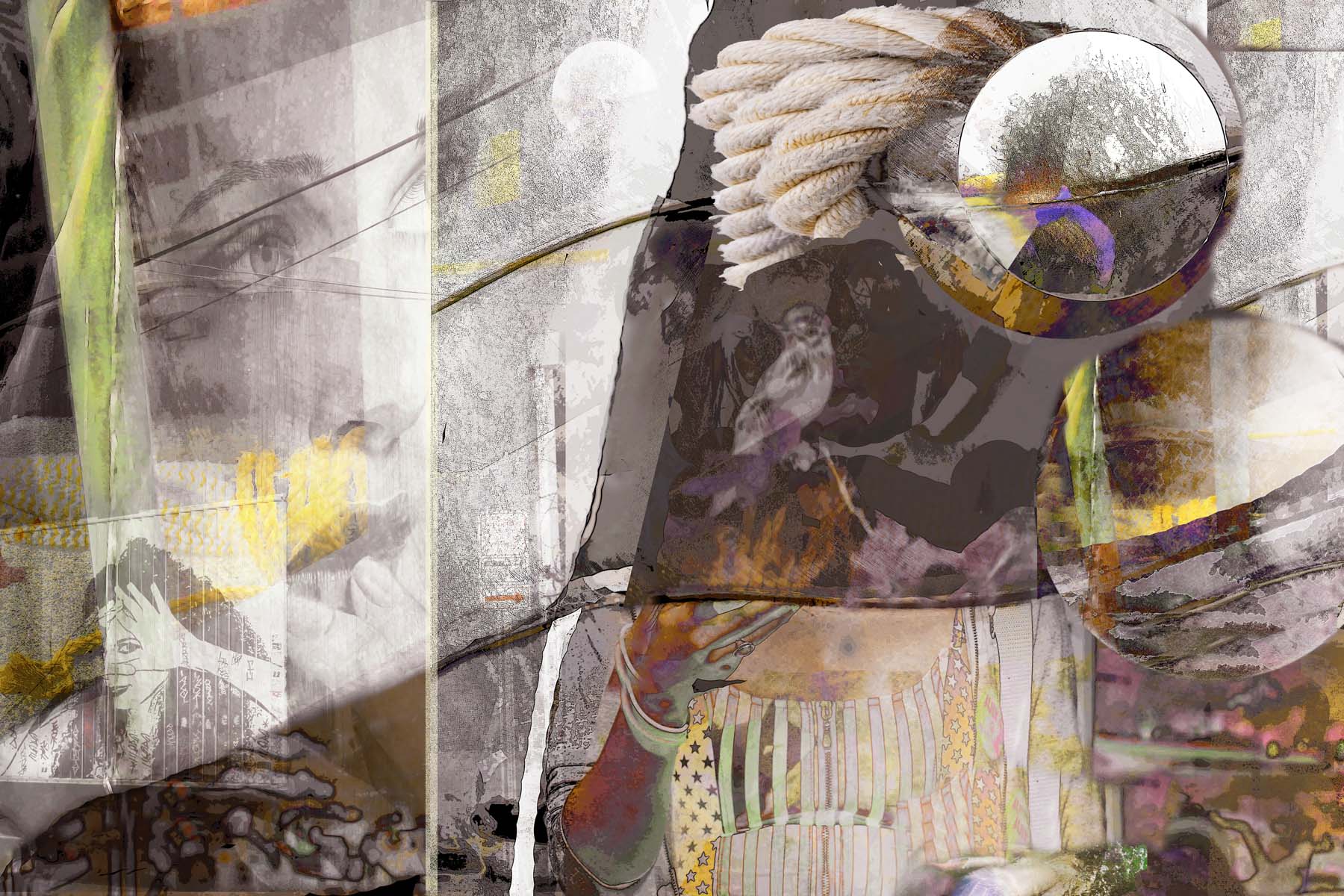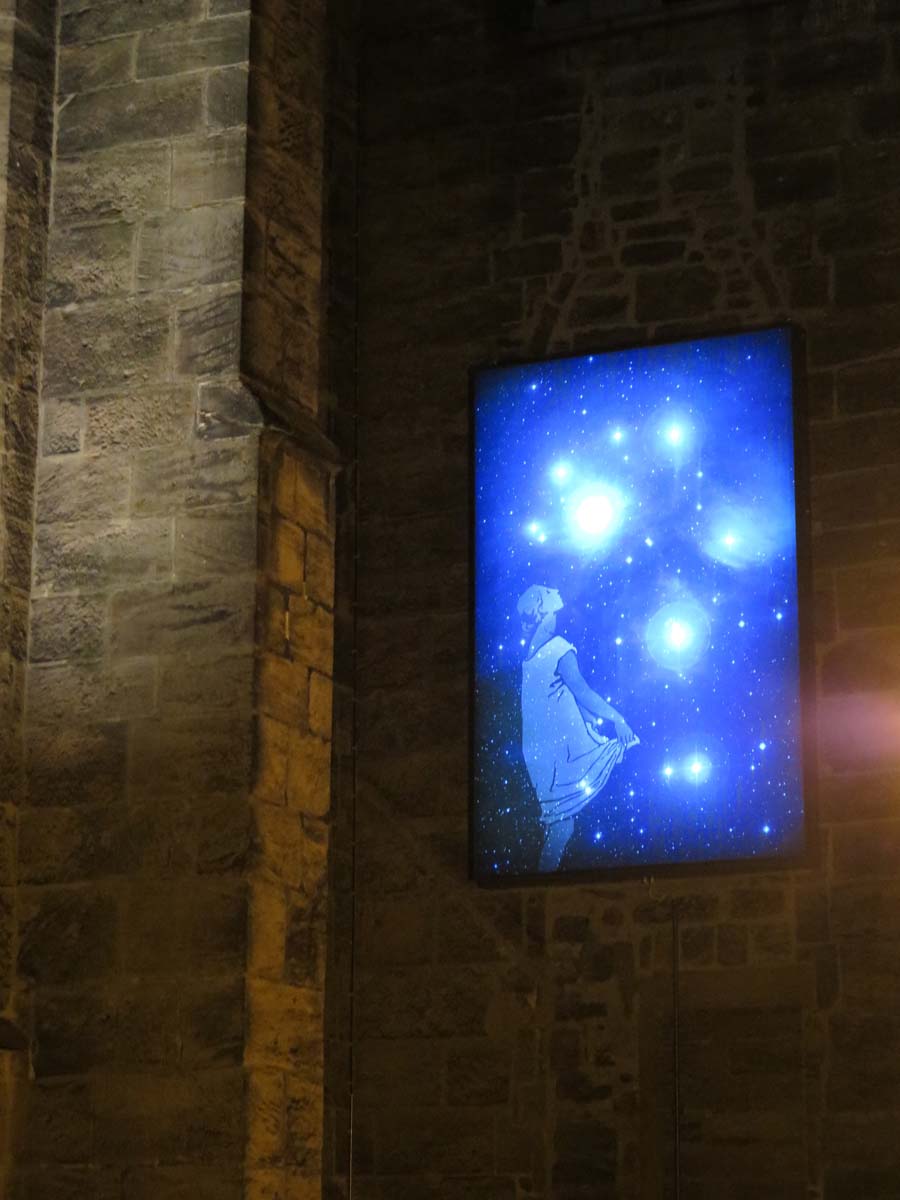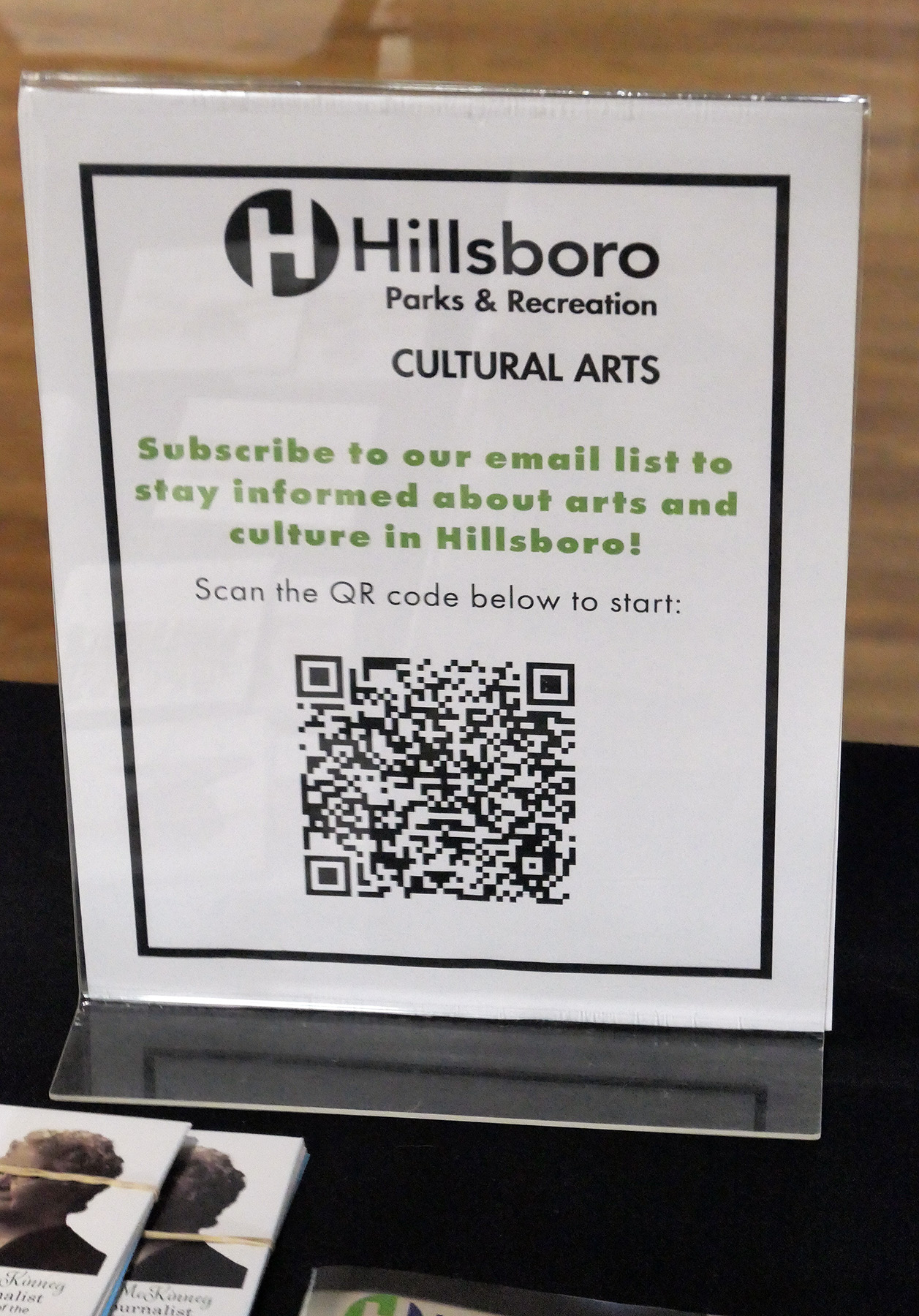Some collaboration has to take place in the mind between the woman and the man before the art of creation can be accomplished. Some marriage of opposites has to be consummated. The whole of the mind must lie wide open if we are to get the sense that the writer is communicating his experience with perfect fullness.”
― Virginia Woolf, A Room of One’s Own
Virginia Woolf’s words above referred to the role one’s gender plays in the act of creating art and the need to stop thinking about it in order to find a voice that is not trapped in bias. They equally apply, I thought, to the problem of making art when more than one person is involved: a marriage of opposites has to be consummated when you are coming from different directions and want the work to preserve the authenticity of each collaborator.
A complex, complicated task, particularly if the partnership extends beyond the work on hand – try sharing an artistic partnership and being actually married to each other, as is the case for Tammy Jo Wilson and Owen Premore, my most recently visited artists for the Exquisite Gorge II project.

————-
THE EXQUISITE GORGE PROJECT II
“…a collaborative fiber arts project featuring 13 artists working with communities along a 220-mile stretch of the Columbia River from the Willamette River confluence to the Snake River confluence. The project, again initiated by Maryhill Museum of Art and following the original one by printmakers in 2019, takes inspiration from the Surrealist art practice known as exquisite corpse. In the most well-known exquisite corpse drawing game, participants took turns creating sections of a body on a piece of paper folded to hide each successive contribution. When unfolded, the whole body is revealed. In the case of The Exquisite Gorge Project II, the Columbia River will become the ‘body’ that unifies the collaboration between artists and communities, revealing a flowing 66-foot work that tells 10 conceptual stories of the Columbia River and its people.”
Artists and Community Partners:
Section One: Oregon Society of Artists–Artist: Lynn Deal
Section Two: Lewis and Clark University–Artist: Amanda Triplett
Section Three: Columbia Center for the Arts, The History Museum of Hood River County and Arts in Education of the Gorge–Artist: Chloë Hight
Section Four: White Salmon Arts Council and Fort Vancouver Regional Library–Artist: Xavier Griffith
Section Five: The Dalles Arts Center and The Dalles-Wasco County Library–Artists: Francisco and Laura Bautista
Section Six: The Fort Vancouver Regional Library at Goldendale Community Library–Artist: Carolyn Hazel Drake
Section Seven: The American-Romanian Cultural Society and Maryhill Museum of Art–Artist: Magda Nica
Section Eight: Desert Fiber Arts & REACH Museum–Artist: Ophir El-Boher
Section Nine: The Confederated Tribes of the Umatilla Indian Reservation–Artist: Bonnie Meltzer
Section Ten: ArtWalla–Artist: Kristy Kún
Frontispiece: Tammy Jo Wilson and Owen Premore
The Exquisite Gorge project has the notion of collaboration built in. The various artists all work together on bringing about the final product, a representation of the river and region comprised of many individual works of art. However, during the process they are completely independent of each other, as is the case with any Exquisite Corpse venture. You blindly link into a collectively assembled chain, your individual creation perhaps guided by a rule (entrance and exit of the river at a specified height location in the sculpture, in the current case), but certainly not derived from direct interaction with the other contributors.

The artist couple and Lou Palermo, Maryhill Museum’s Curator of Education, in the Oregon City workshop.
The project also is heavily indebted to what the community partners bring to the venture. In some cases it is a true artistic collaboration, when community members participate in the act of creation, like the members of the various fiber art guilds, the individuals who help crochet and knit for the yarn bombing, the Lewis&Clark students involved in fabrication. In other cases collaboration consists of providing venues for education, hosting artist talks, putting up workshops, supplying all kinds of supports – the project would not work without all the libraries, the art centers, cultural societies, tribal leadership and, of course, sponsors and granting agencies involved – all deserve outspoken recognition for being partners in art.

and everyone…. when it all comes together, it works. Glimpses from the workshop.



It is different, though, when you try to bring two minds, two artists working in different media, 2D and 3D respectively, together to make a single piece of art. By all reports, the process was long and hard for today’s featured artists, yet, from everything I have seen so far, quite fruitful.
It probably helped that the partners shared artistic projects before, though these were often curatorial. Wilson and Premore co-founded Art in Oregon, for example, a statewide nonprofit that intends to “foster culturally rich regional communities through partnerships, advocacy, and investment in artists, businesses, educational spaces, and community spaces.” It has become an invaluable resource: their ArtShine.org website provides a platform for OR artists that extends beyond the metro area, including regions like Lincoln County. You can search for artists by region, by name, by type of media. The curated database, to which artists can freely apply, is like a digital gallery that allows people interested in purchasing or displaying art to contact artists directly, a tool to connect artists to community.
Wilson and Premore also co-curated individual exhibitions, the 2019 An Artistic Heritage in Lake Oswego and You are Not a Robot in 2020 among them. The latter was intended for the Lakewood Festival for the Arts but had to be put online due to the pandemic.

___________________
Tammy Jo Wilson grew up in Madison, WI, and received her BFA from the Pacific Northwest College of Art and her MFA from San Jose State University. I met her in 2019 when I interviewed her as a participating artist in the first Exquisite Gorge project, at Lewis&Clark College where she has worked in the art department as the Visual Arts & Technology Program Manager for the past thirteen years. I subsequently wrote about her curatorial work here.
In the meantime Wilson was also appointed as Arts Commissioner for the City of Oregon City in September 2021. In 2021 she made a splash in the Oregon art landscape with her curation of the exhibit Black Matter, which features work by a dozen Black artists, with a variety of media: mixed media pieces, sculpture, digital prints, portrait and narrative painting, photography, and more. Oregon Arts Watch’s David Bates ranked the show at the Chehalem Cultural Center in Newberg among his favorites of the year. The traveling exhibition can currently be visited at A.N.Bush Gallery at the Bush Barn Art Center in Salem, OR.


Her own artistic output has not suffered, despite her various occupations. Her most recent solo show, Figure Ground, in the Roger W. Rogers Gallery of Willamette University this spring, was well received. In our conversation she explained how her approach to art unfolds from within, a visual voice that emerges to the outside as a representation of the internal emotions. Organic structures and surrealistic landscapes reflect that.



For the EG II frontispiece she decided to focus on the aquatic plant life that provides protective cover and/or nutrients for fish in the river, duckweed included. Duckweed can be supportive of fish populations and has been of great interest to scientists trying to find more productive, resilient ways to grow food in times of climate change. But the plant is also known as invasive when not properly managed. It deprives the water of oxygen, killing both fish and beneficial algae. It readily absorbs certain toxic metals helping to clean polluted environments, but then it is toxic itself and requires safe environmental disposal, which is costly. Figure ground reversal here as well, depending on what aspect of the plant you look at. Edgings of the plants will be printed on gauzy material that will flow through the frame like the Columbia river water, reminding us of the fragility as much as the resilience of nature that has been exposed to polluting forces for centuries.

The “water” will immerse a life-sized sturgeon, sewn by Premore, and surrounded by river stones covered in moss, fabricated from a substrate felted with raw wool, another important element in a region that has seen an increase in sheep ranches supporting the local economy.




Owen Premore grew up on a farm in the Willamette Valley, near Eagle Creek. He was surrounded by nature, but also by adults who modeled spatial thinking (architects and engineers were immediate relatives) as well as crafting – he learned to crochet as an eight-year old, taught by his Italian grandmother whose own mother had been a textile artisan, well versed in the difficult art of tatting.
He received his BA from the University of Oregon and his MFA in Spatial Art from San Jose State University, where he and Tammy met. Next he spent a decade or more at OMSI, curating and installing some 13 traveling exhibitions, some as large as 6000 square feet. The job required extensive travel where he lived in hotel rooms for weeks at a time, with his only escape from the stress of the day found in needle arts at night. Many of the crocheted works originated from those times, often depicting the fare at his disposal, from diners to hotel bars. Ready to stay closer to home, Premore has been the Directing Curator of the Art About Agriculture Program at Oregon State University since 2018.



His focus on interactive installations, often with kinetic and auditory components led to enormous skills in building environments with salvaged ore prefabricated materials, providing museums and galleries with technical support. His workshop contains pretty much every tool know to man(kind,) with metal and wood working stations that enable Premore to create his sculptures. His work has been exhibited in several group and solo shows since 2002, most recently at Joan Truckenbrod Gallery in Corvallis.


Where Wilson works from the inside out, Premore’s artistic process often functions in the opposite direction: taking the impressions derived from the environment and letting them feed his creative thought. For the EG II project he traveled along the Columbia river, looking a various sites, lured by the fish hatcheries and the fish ladders at the Bonneville dam. He became fascinated with the white sturgeon, its incredible size, the biggest fresh water fish in the world. These creatures can live up to 150 years, they are beautiful – and dangerous to your health. State health officials recommend that you limit your intake of river fish to a few meals a month because these bottom feeders have ingested so much polychlorinated biphenyls — or PCBs – that the levels in their flesh is exceeding official screening values. Man-made pollution endangering environment and subsequently ourselves. Man-made obstacles damming the river, trapping wild fish to ever shorter spawning journeys.





It is the blending power of things, aquatic plants that protect and harm, fish that nourishes and poisons, that is captured in the installation. It is fiber art as much as environmental commentary, blending a sense of awe with disquiet.
For me the immediate association of envisioning this huge fish in the frame (I only saw a model on a worktable nearby) was that of another, iconic work of art, that had a dead shark trapped in Formaldehyde, slowly rotting until replaced by another specimen, also killed for the purpose, Damien Hirst’s The Physical Impossibility of Death in the Mind of Someone Living.

Like much of Hirst’s work, it lent itself to outcries, the absurdity of selling a (second) killed creature for $12.000 million to collectors, expressing the obscenity of the contemporary art market. Here’s a fun book that delivers details: The $12 Million Stuffed Shark: The Curious Economics of Contemporary Art, by Don Thompson. “A Dead Shark isn’t Art!” filled the headlines after Stuckism International Gallery offered a parody.
Why did it come to mind, other than a fleeting visual parallel, when thinking about a carefully sewn fish, stuck within fabricated aquatic overgrowth, surrounded by felted stones? It was the symbolism of a trap, a trapped fish and a thought-trap, inviting us to figure out its meaning and significance. In fact, Premore had shown Lou Palermo, Maryhill Museum’s Curator of Education, and me a small fiber installation of a trap earlier during our visit, part of a series of mixed media works, that had already alerted me to the concept of trap.

Red Trap 2, 2012 Natural and synthetic yarn, synthetic filling, Polyethylene, mono-filament, mahogany, rubber.


On Left: Blue Trap, 2008 Natural and synthetic yarn, synthetic filling, Polyethylene, monofilament. On Right :Red Trap 1, 2008 Natural and synthetic yarn, synthetic filling, Polyethylene, mono-filament
And of course, they were things trapped all over the place, some mysterious, some identifiable.


Between that trap and Premore’s kinetic machines that use all kinds of repurposed materials and his sense of playfulness, I was also reminded of Marcel Duchamp’s Trebuchet. Duchamps, who loved puns, called a coat rack that he had nailed to the floor, after forgetting to mount it and constantly stumbling over it, trebuchet – a trap. The term is similar to the word trebucher, a classical chess move where a pawn trips an opponent’s move. And certainly that “trap” on the floor trips up the viewer. Of course the (creative) act of choosing a prefabricated object, ignoring its utilitarian function and giving it a title that implies new meaning, was the beginning of the move towards conceptual art – Readymades paving the path for what we are seeing today.

Original Version:
1917, New York
lost
coat rack nailed to floor
assisted readymade
no dimensions recorded

Replica, Milan, 1964
Much has been written about couples comprised of famous artists. How their intellectual exchange influenced their work, how their relative standing in the art world kept one of them in the shadows, often undeservedly so, how competition affected their creativity. In no particular order, Camille Claudel and Auguste Rodin., Dora Maar or Francoise Gilot and Picasso come to mind, or Georgia O’Keeffe and Alfred Stieglitz, Lee Miller and Man Rey, Dorothea Tanning and Max Ernst. There were Frida Kahlo and Diego Rivera, Jasper Johns and Robert Rauschenberg, and Paula Modersohn-Becker and Otto Modersohn.
Of more immediate interest are couples who actually worked together on creating a shared (vision for a) piece of art. There are famous ones like Jeanne Claude and Christo, or Yoko Ono and John Lennon. Or some new to me, like Jennifer Allora and Guillermo Calzadilla, who met as art students in 1995 and have been creating politically engaged conceptual works ever since. The way they describe their creative process is perhaps not so far from how Wilson and Premore proceed (speculating here, folks!):
“…they arrive at their concepts by ‘throwing out ideas and free-associating’. However, Allora admits that there is a downside to having two minds working on a project: they argue a lot.” (Ref.)
There are artists Sue Webster and Tim Noble, who often work with trash, literally, shaping piles of refuse into the most amazing shadow representations, frequently of themselves. Obviously not averse to materials signifying the opposite, either. Unless that is sarcasm, telling by their website, not out of the question…


Left: THE GAMEKEEPER’S GIBBET, 2011 Solid sterling silver gilded in pure gold, metal stand, light projector — Right: REAL LIFE IS RUBBISH, 2002 Mixed media, light projector.
Shana and Robert ParkeHarrison have been together for over 20 years, making riveting art based on shared interest in dance, printmaking and photography, focused on the evolution of the anthropocene and our impact on the environment.

First of May (2015)

Red Sun
2022
photolithography
Then there is MINIMIAM, comprised of photographers Pierre Javelle and Akiko Ida. Their name is a play on words by combining miniature and “yummy” (in French, it’s “miam”). Their installations consist of food that’s inhabited by tiny people who interact with it like it’s a real world to be lived in. Obvious, why this work came to mind, right?

P’TIT-TOUR (2003) – Bike. cycling. Tour de France. donut. pastry. cake. sweet. coffee. sugar. race. team. sport. spoon. pink. icing.

DELICABAR SUMO-PLOUF (2005) – Sumotori. Sumo. Cherry. chocolate. Sebastien Gaudard. splash. cake. Japan.

Owen Premore Crocheted Doughnut
I do appreciate wit! And I guess the collaborative process in developing art is closely aligned with the process of making a long-term relationship work: it can be demanding, contentious, vexing, inspiring and, let’s be honest, occasionally exhausting. But ultimately it is astoundingly rewarding.
We will see the full artistic results in August.
